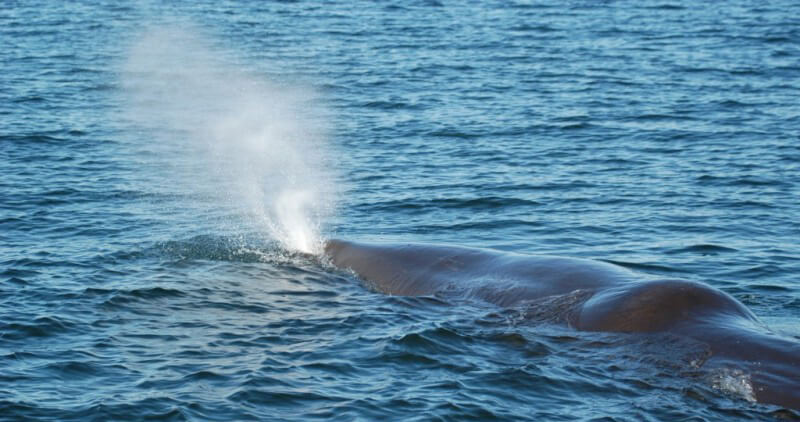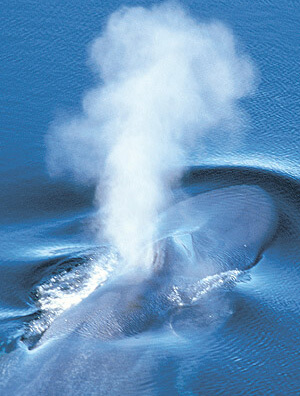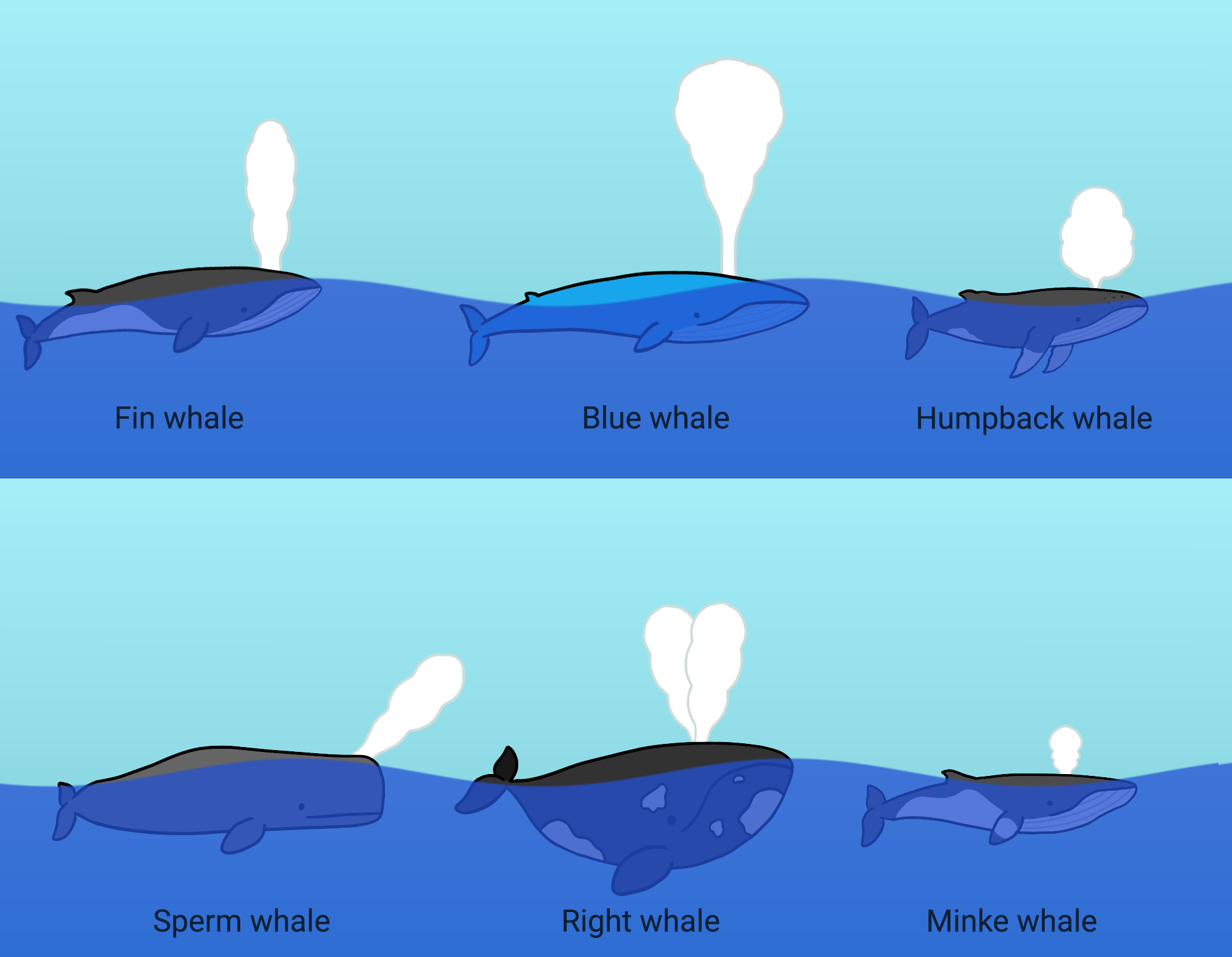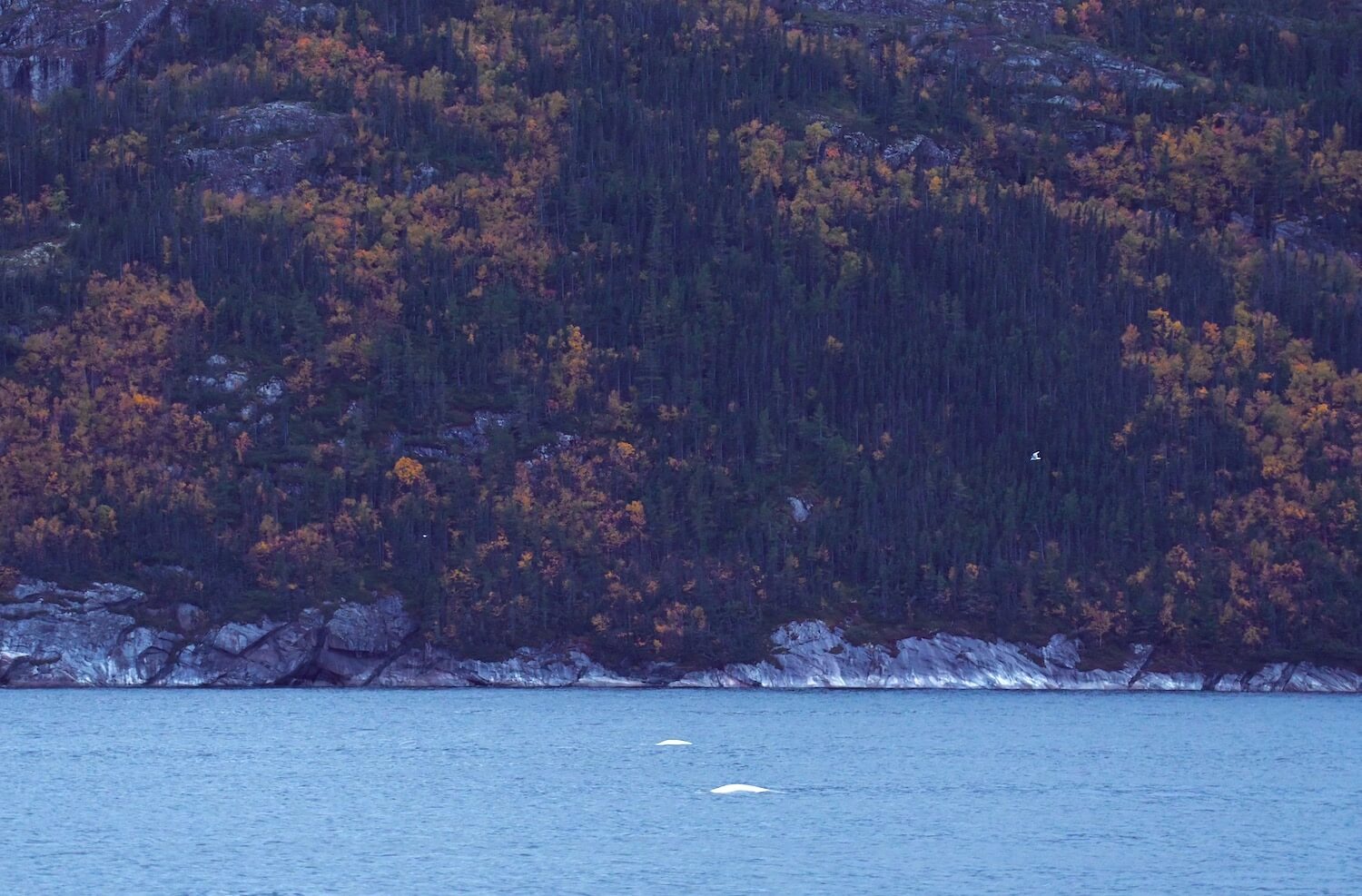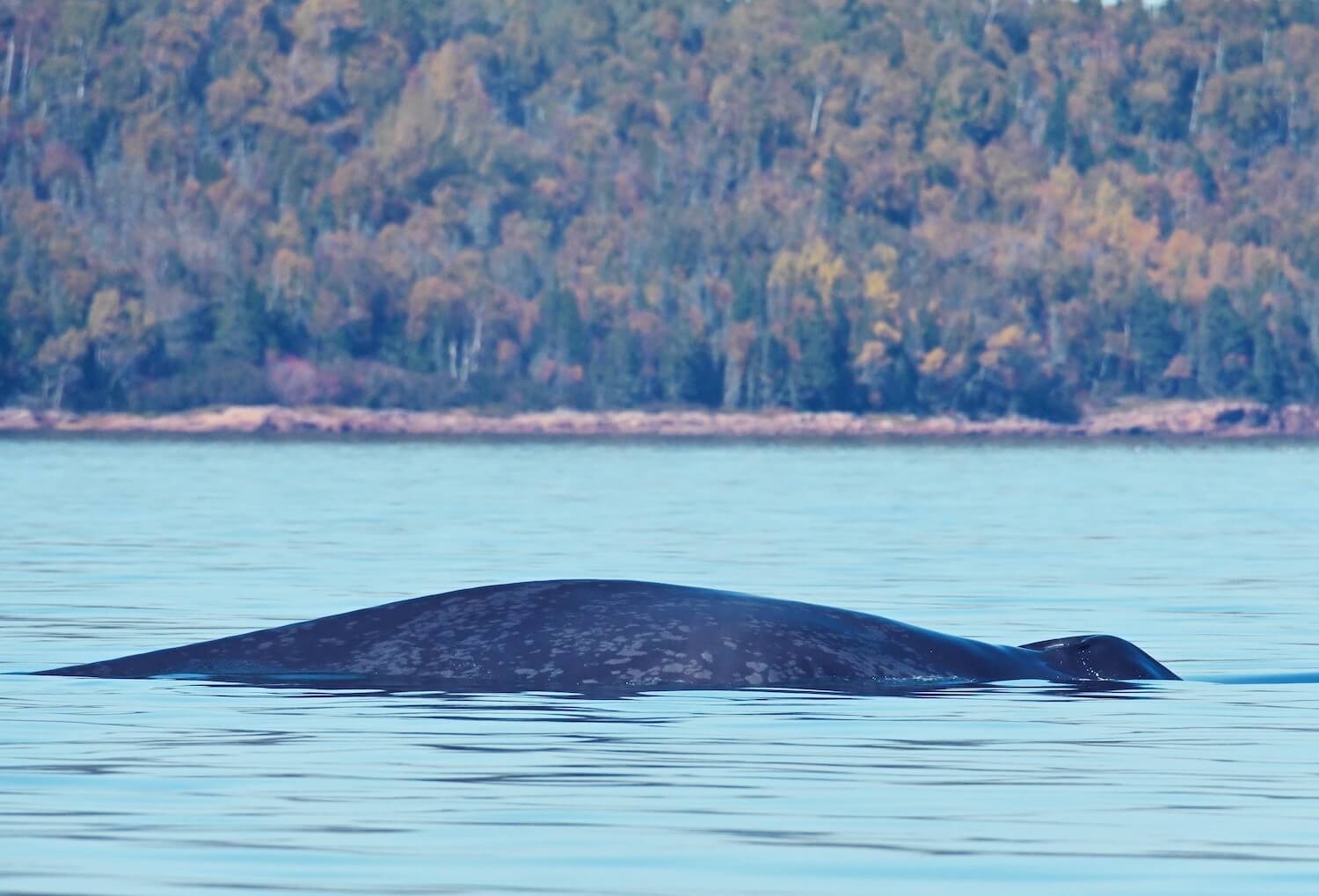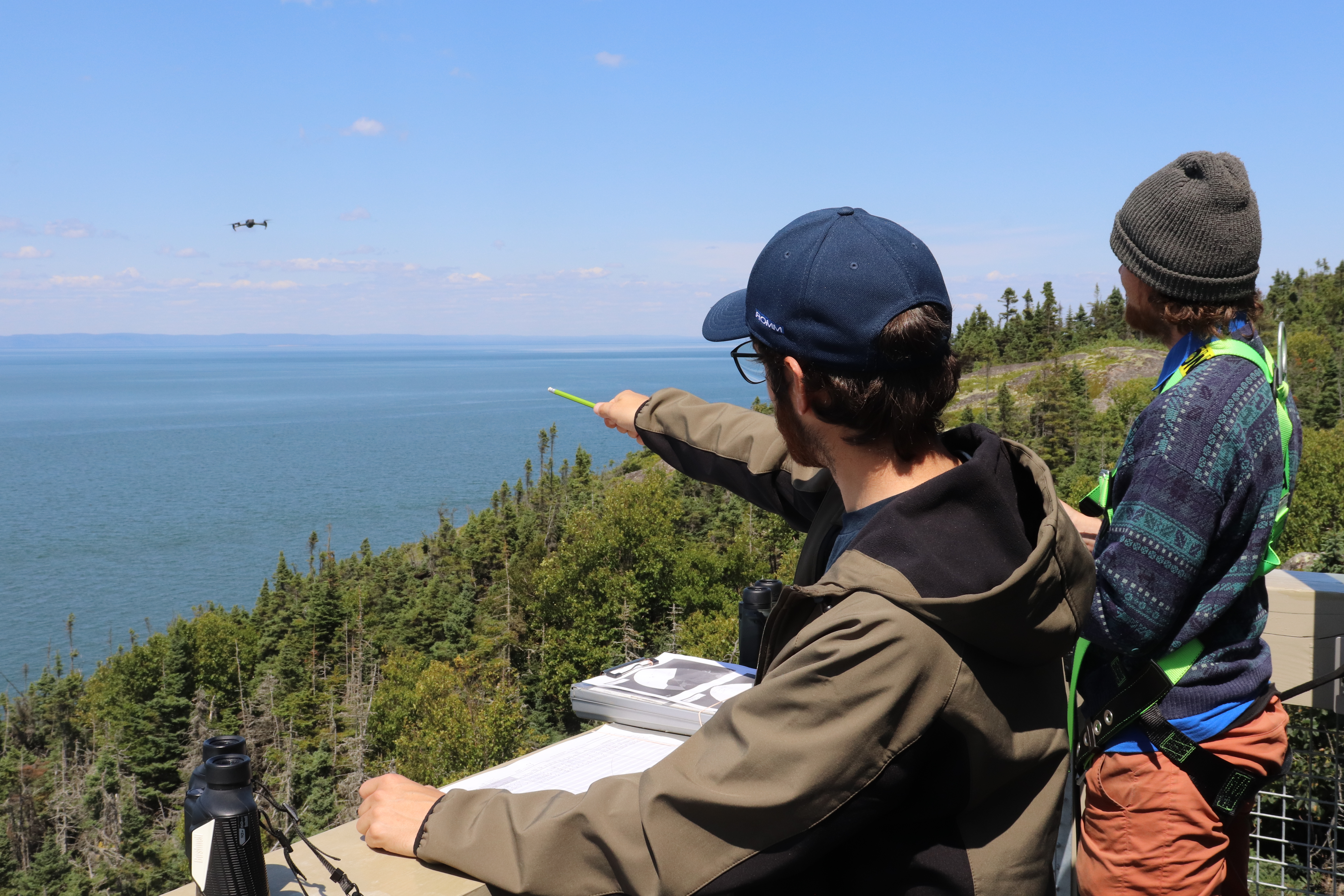What is spout?
A blue whale can breath in just 1 to 2 seconds. With each breath, whales replace up to 90% of the air contained in their lungs (compared to 10-15% for humans). Air is expelled from their lungs at high speed (up to 720 km/h recorded by scientists in a young gray whale) through their nose, which is found on the top of their head and is called a “blowhole”. The hot (37°C) air condenses upon contact with the colder outside air and forms a cloud. In addition to the difference in temperature, since the air exhaled is compressed, the difference in pressure between the lungs and the ambient air also causes condensation or vapour. In this mass of expelled air are also water and oil droplets from the upper respiratory tracts or the top of the blowhole.
To each his cloud
Spout characteristics vary by species as a function of their size and the structure of the blowhole: a double blowhole forming a bump on the head for baleen whales (mysticetes), and a single blowhole or orifice at the crown of the head for toothed whales (odontocetes).

